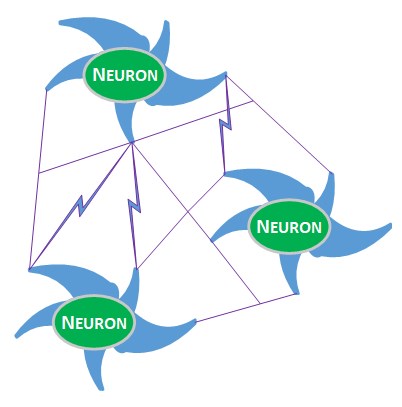How We Learn
Learning takes place when a connection made between neurons in the brain.
When we are learning something new, a neuron is stimulated to release neurotransmitters. These neurotransmitters make connections to other neurons and form a neural network. The brain is made up of 100 billion neurons that connect to thousands of other neurons forming a giant network of information and knowledge.
The Learning Process
The learning process begins when the senses receive stimuli. The brain reacts to the stimuli by firing neurons. When a neuron fires, a chemical known as a neurotransmitter is released. The neurotransmitter is sent across a tiny gap known as a synapse to relay a message to the dendrites in the receiving neuron. Thus, a new connection is made. These synaptic connections form new neural networks every time we learn something new. The network expands by repeating the communication between neurons creating more dendritic branches.
Synaptic strength varies according to the number of stimuli received during a learning process. The more senses involved the stronger the connection. This is why people tend to remember experiences that impact multiple senses.
Billions of neurons are communicating with each other all the time as the brain receives new stimuli. When the stimuli enters the brain, the brain compares this new information with what has already been established. It searches neural networks that already exist that it might connect this new information to. If it finds something, it links the new information creating a new network of connections.
New synapse connections will be formed between neurons that were not previously connected to create new networks of neurons that represent a new memory. If the new information supports previously connected information, the firing of the neurotransmitters across the synapse strengthen the connection. This is why we remember things easier if we are exposed to it several times.
Deeper Learning
When a neuron transmits neurotransmitters across the synapse gap to relay a message to the dendrites in the receiving neuron, a memory has been created. This memory becomes part of a neural network specific to what has been learned. This connection endures whether it is being used or not. However, these synaptic connections can weaken or strengthen over time.
There may a decay or loss of memory due to the passage of time if the memory trace is not used. On the contrary, the more times something is experienced or remembered the connection grows stronger and more permanent. This is because the more signals sent between two neurons, the stronger the connection grows. The stronger the connection grows the deeper the learning becomes. This strong connection allows the neurons to communicate with each other faster and more efficiently each time. Therefore, it takes less time for the brain to process the information.
Physically Changing
The brain is said to be “plastic”, meaning it physically changes as we learn or experience something new. With each new experience and each remembered event or fact, the brain changes its physical structure by making connections between neurons in the brain. Hence, a physical change occurs when a new memory is formed.
Related Links

